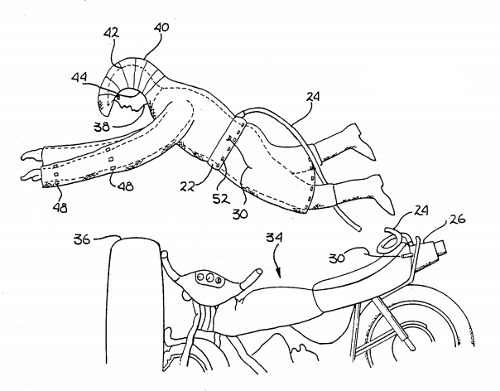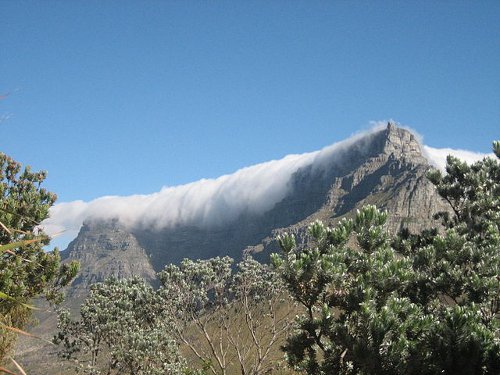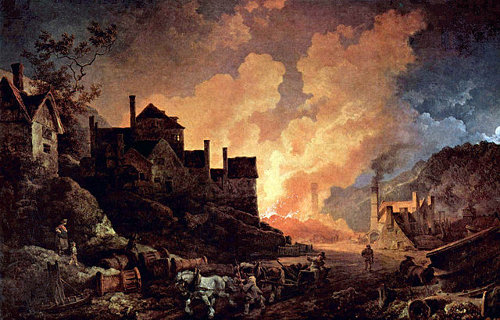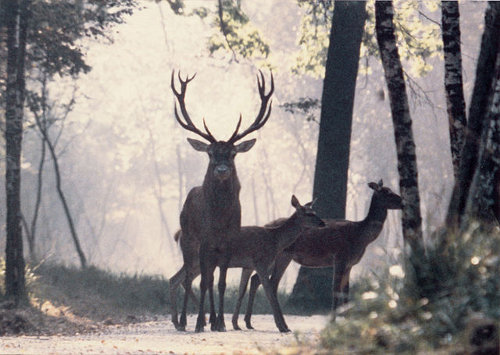ruelle
n. the space between a bed and the wall
Month: September 2013
“A Tragic Story”
There lived a sage in days of yore,
And he a handsome pigtail wore;
But wondered much and sorrowed more,
Because it hung behind him.
He mused upon this curious case,
And swore he’d change the pigtail’s place,
And have it hanging at his face,
Not dangling there behind him.
Says he, “The mystery I’ve found!
I’ll turn me round,” — he turned him round;
But still it hung behind him.
Then round and round, and out and in,
All day the puzzled sage did spin;
In vain — it mattered not a pin —
The pigtail hung behind him.
And right and left and round about,
And up and down and in and out
He turned; but still the pigtail stout
Hung steadily behind him.
And though his efforts never slack,
And though he twist and twirl, and tack,
Alas! Still faithful to his back,
The pigtail hangs behind him.
— Thackeray
A New Collectible

In 1961 Italian artist Piero Manzoni offered art buyers 90 tins of his own excrement, signed and numbered, each sold by weight at gold’s daily market price.
That would have been a good investment. A tin that would have cost $37 in 1961 was auctioned by Sotheby’s for $67,000 in 1991 — outperforming gold more than seventyfold.
Happy Landings

Dan Kincheloe patented this “motorcycle safety apparel” in 1989. The rider wears an inflatable suit that’s connected by an umbilical cord to a container of compressed or liquefied gas. A much shorter pull cord connects the rider to the container’s valve. When the rider leaves the bike in a crash, the pull cord opens the valve and (hopefully) the gas inflates the suit before the umbilical cord separates.
“Thus it may seen that the jacket … expands upon separation of the rider from the motorcycle to essentially encase the rider within a protective cocoon to protect the rider from abrasion, to hold the body in a substantially rigid form, to minimize back and leg injury, to provide an air bag leg cushion around the body, to cushion impacts with hard objects and to grossly augment the protection provided by any other more conventional protective device worn by the rider such as gloves, helmet and boots.”
Nota Bene
In 1937 Wolcott Gibbs drew up a list of 31 rules for new fiction editors at the New Yorker. “The average contributor to this magazine is semi-literate,” he wrote. “That is, he is ornate to no purpose, full of senseless and elegant variations, and can be relied on to use three sentences where a word would do.” Some of his rules:
1. “Writers always use too damn many adverbs. On one page, recently, I found eleven modifying the verb ‘said’: ‘He said morosely, violently, eloquently,’ and so on. Editorial theory should probably be that a writer who can’t make his context indicate the way his character is talking ought to be in another line of work. Anyway, it is impossible for a character to go through all these emotional states one after the other. Lon Chaney might be able to do it, but he is dead.”
2. “Word ‘said’ is O.K. Efforts to avoid repetition by inserting ‘grunted,’ ‘snorted,’ etc., are waste motion, and offend the pure in heart.”
3. “Our writers are full of clichés, just as old barns are full of bats. There is obviously no rule about this, except that anything that you suspect of being a cliché undoubtedly is one, and had better be removed.”
12. “[Style editor Hobie] Weekes said the other night, in a moment of desperation, that he didn’t believe he could stand any more triple adjectives. ‘A tall, florid and overbearing man called Jaeckel.’ Sometimes they’re necessary, but when every noun has three adjectives connected with it, Mr. Weekes suffers and quite rightly.”
20. “The more ‘as a matter of facts,’ ‘howevers,’ ‘for instances,’ etc., you can cut out, the nearer you are to the Kingdom of Heaven.”
“I would be delighted to go over the list of writers, explaining the peculiarities of each as they have appeared to me in more than ten years of exasperation on both sides,” he wrote. “By going over the list, I can give a general idea of how much nonsense each artist will stand for.”
Fitting

South Africa’s Table Mountain is sometimes overspread with a tablecloth of cloud.
William Webster, surgeon of the British sloop Chanticleer, described the phenomenon in 1834:
When a south-east wind, passing over the southern shores of the Cape, prevails sufficiently to surmount the Table Mountain, the first notice of the fact is a little mist floating as a cloud on a part of it about ten or eleven o’clock in the forenoon. By noon the mountain becomes fringed with dew; and half an hour after, a general obscuration takes place by the mist. In another half hour the little cleft between the Devil’s Berg and the Table Mountain pours over the cloudy vapour; and at two the Devil’s Berg is capped by the cloud. The table-cloth is now completely spread. … While the Table Mountain remains covered with the dense cloud, fragments of the vapour are torn from it by the force of the wind, and are hurried about the sides of the mountain, assuming a variety of fantastic shapes, and playing about the precipice according to the direction of the different currents of wind. This phenomenon lasts till about five in the afternoon, when a little clearing, which takes place on the western edge of the mountain, announces that the table-cloth is about to be folded up. By six or seven the clearance has considerably advanced; and by eight or nine every vestige of it is gone, and nothing is seen about the mountain but an ethereal sky and the twinkling stars.
Bean Counting
We tend to think that some wrongs are so small that doing them makes no difference. If I keep my heater on during a power shortage, perhaps the shortage lasts a hundredth of a second longer than it would otherwise have done. I tell myself that this effect is too small to matter.
But imagine a village in which 100 tribesmen are eating lunch. 100 bandits descent on the village, and each bandit takes one tribesman’s lunch and eats it. The bandits leave, each having denied a tribesman an appreciable amount of pleasure.
The next week, hungry again, they descend on the village and tie up the tribesmen. At first they have some moral qualms about robbing them again, but then they notice that each tribesman’s lunch consists of 100 beans.
“The pleasure derived from one baked bean is below the discrimination threshold,” writes philosopher Jonathan Glover. “Instead of each bandit eating a single plateful as last week, each takes one bean from each plate. They leave after eating all the beans, pleased to have done no harm, as each has done no more than sub-threshold harm to each person.”
The outcome of the second raid is the same as that of the first, yet this time no tribesman has been “significantly” wronged by any bandit. Can we still say that some crimes are too small to matter?
(Jonathan Glover and M.J. Scott-Taggart, “It Makes No Difference Whether or Not I Do It,” Proceedings of the Aristotelian Society, Supplementary Volumes, 49 (1975), 171-209)
Industrial Devolution

In 1830 engineer James Nasmyth visited England’s Black Country:
The earth seems to have been turned inside out. Its entrails are strewn about; nearly the entire surface of the ground is covered with cinder-heaps and mounds of scoriae. The coal, which has been drawn from below ground, is blazing on the surface. The district is crowded with iron furnaces, puddling furnaces, and coal-pit engine furnaces. By day and by night the country is glowing with fire, and the smoke of the ironworks hovers over it. There is a rumbling and clanking of iron forges and rolling mills. Workmen covered with smut, and with fierce white eyes, are seen moving about amongst the glowing iron and the dull thud of forgehammers.
Amidst these flaming, smoky, clanging works, I beheld the remains of what had once been happy farmhouses, now ruined and deserted. The ground underneath them had sunk by the working out of the coal, and they were falling to pieces. They had in former times been surrounded by clumps of trees; but only the skeletons of them remained, dilapidated, black, and lifeless. The grass had been parched and killed by the vapours of sulphureous acid thrown out by the chimneys; and every herbaceous object was of a ghastly gray — the emblem of vegetable death in its saddest aspect. Vulcan had driven out Ceres. In some places I heard a sort of chirruping sound, as of some forlorn bird haunting the ruins of the old farmsteads. But no! the chirrup was a vile delusion. It proceeded from the shrill creaking of the coal-winding chains, which were placed in small tunnels beneath the hedgeless road.
He added: “I sat down on an elevated part of the ruins, and looked down upon the extensive district, with its roaring and blazing furnaces, the smoke of which blackened the country as far as the eye could reach; and as I watched the decaying trees I thought of the price we had to pay for our vaunted supremacy in the manufacture of iron. We may fill our purses, but we pay a heavy price for it in the loss of picturesqueness and beauty.”
Us and Them

Red deer still honor the Iron Curtain. During the Cold War, barbed wire and an electric fence divided Eastern Europe from the West, separating the deer population into two groups. Deer follow traditional trails, which are taught to each generation by its forebears. Now that the fence is gone, red deer range on both sides of the border but refuse to cross it.
“In the past, the deer didn’t go to the Czech side because of the fence,” German biologist Marco Heurich told the Wall Street Journal in 2009. “Now the fence is gone but they still stop at the border.” Film producer Tom Synnatzschke added, “The wall in the head is still there.”
As with humans, it’s the young deer who are testing the old ways. “Our data showed that the animals behaved very traditionally,” said zoologist Pavel Sustr. “The former border was in the minds of the animals. But some of the young animals are searching for new territory. They are more and more deleting the border behavior that was there before.”
Unquote
“Now she is like everyone else.” — Charles de Gaulle, at the funeral of his daughter Anne, who had Down syndrome, February 1948
